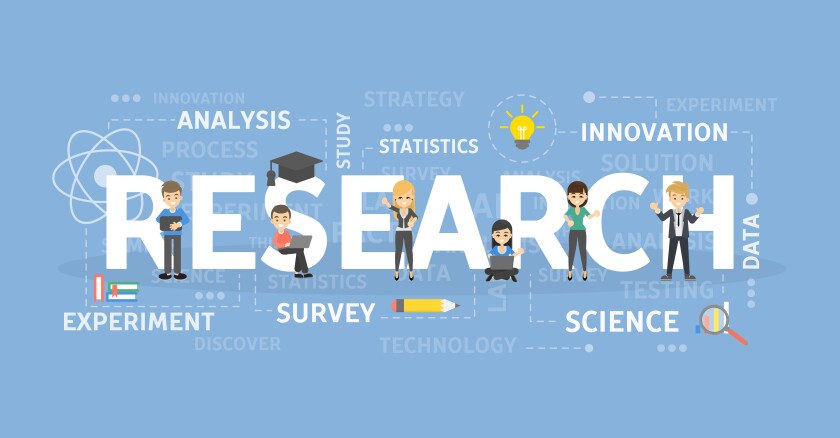Called the Blueprint for Inclusive Research and Development in Education, or BIRD-E, InnovateEDU’s new framework summarizes 150 key elements that represent core education data needs, according to a news release from the nonprofit. It guides researchers in designing their work to be explainable in simple language so that district administrators and educators, among others, can better identify and align their programs with interventions that suit their respective student needs.
The building of the framework was led by InnovateEDU, and it was designed with the aid of more than 70 companies, education and industry organizations, and federal and state agencies, including the U.S. Department of Education’s Institute of Education Services (IES). A Bill and Melinda Gates Foundation grant of roughly $1 million supported the efforts, InnovateEDU co-founder and Executive Director Erin Mote said.
InnovateEDU’s website describes the BIRD-E framework like a map that connects dots within current K-12 research infrastructure. It says that education leaders and researchers all intend to get to the same place, but they have different starting points. The framework ensures that everyone will find the final destination, getting the information they need to make technology purchases based on their needs and budget, by making research quicker and easier to understand. Mote said that if the framework had been available ahead of the COVID-19 pandemic, school district administrators would have been far more prepared.
“We failed the field. And we failed teachers and superintendents in being able to surface in the midst of COVID-19 (by not helping them find) the best, most efficacious evidence-backed interventions that can help meet the challenge that COVID meant for schooling when it moved to digital or remote learning,” Mote said in an interview with Government Technology. “We were in emergency learning. And if we actually had a way to think about, ‘how do we surface the best understanding that we have from other situations or context,’ we would have been able to answer that clarion call from the field about what they should do.”
Over the course of three years of developing the framework, the start of which predates the pandemic, Mote said there were eight separate pilot programs to ensure the model had been tested in different organizations. The BIRD-E framework covers a broader scope of work than the IES Standards for Excellence in Education Research (SEER) model, which defines nine core principles to guide research. IES Director Mark Schneider said that what IES is doing with the SEER principles runs parallel to what the BIRD-E framework is setting out to achieve.
“Researchers invent their own measures, and as a result, the world is way too confusing. So, we are trying to, to the extent to which we can, just like BIRD-E, impose some order on this wild, wild west of education research,” Schneider said. He added that both the SEER principles and BIRD-E are trying to codify good science, but the SEER principles are more highly focused as the IES sets rigid parameters to determine which projects to fund. BIRD-E, on the other hand, “is trying to map the whole ecosystem,” he said.
BIRD-E, Schneider said, recognizes the importance of the modernization of research and development in education, including R&D infrastructure. With added federal funding pumped into districts and states due to the pandemic, and mandates set under the Every Student Succeeds Act that, in part, orders the purchase and use of ed-tech tools, the transparency provided by BIRD-E can positively impact the ed research and development space, Schneider said.
In addition to the launch of the BIRD-E framework for education research, InnovateEDU hosted a webinar Wednesday, moderated by Mote, with panel members explaining the benefits of the framework in their respective lines of work. Among the panelists were ed-tech company LearnPlatform’s Director of Research Mary Styers, Temple Lovelace of the Advanced Education Research and Development Fund, and Liz Albro of the Department of Education’s IES. Styers later said in an email to Government Technology that education research and development must be comprehensible in order to help students and teachers, and she believes the framework can accomplish that.
“Every district and state administrator, policymaker, researcher and solution provider should be able to understand and access research,” she said. “The BIRD-E Blueprint is a foundational translation layer — a common language — to make it easier for all K-12 stakeholders to be able to safely collect and share data for analysis, interpretation, and use in their daily work.”
Mote believes that ed-tech providers should be utilizing the framework as common practice going forward as they work with practitioners to build the right tools for success in the classroom.
“BIRD-E is the foundation and that common language of which ed-tech providers should be adopting in terms of the data sets that they’re using to collect evidence,” Mote said.
For Schneider, BIRD-E and its common language is a necessity that establishes whether they are doing what they set out to do.
“Our goal is to try to affect the practices and facts on the ground and education of children and learning outcomes and student outcomes across the spectrum, from early childhood to (higher education),” Schneider said. “If we don’t translate this stuff, if we don’t make it available and understandable and usable, I don’t think we’re doing our job.”















